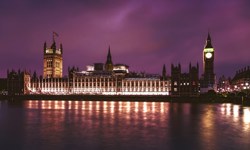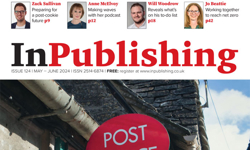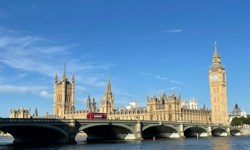We love trade shows, don’t we? Where else can you catch up with all the latest gossip, have a beer or two with old colleagues in exotic locations and learn about new techniques for surviving the many challenges to our business. I have attended countless trade shows over the years variously as delegate, organiser, speaker and vendor so I have a well rounded insight into the exotic and often contrary world of publishing trade shows.
There are numerous trade show organisations all appealing to global publishing audiences but each with their own twist and acronym. WAN, PANPA, IFRA, INMA, Distripress and NEXPO for example all operate in a broadly similar space but each addressing a different geographical or business segment. They all learn from each other and the spread of best practice should mean that, for delegates and vendors, the experiences should get better and better. At a recent trade show, I came across the head guys of four other (competitive) trade organisations all taking extensive notes and fully sampling the atmosphere.
There are certain key elements to organising a successful trade show:
1. The location
Firstly, the location is vital and must be attractive even out of season. Most trade shows take place in autumn / winter so that the hotel rooms and exhibition space are more affordable. So, Las Vegas in January, Cape Town in June, Melbourne in August and Vienna in September all fit this model admirably, while Glasgow and Tupelo in November do not. Funnily enough, the delegates themselves are much happier out of season too because it helps deflect the very unfair charge that they are off on holiday levelled by jealous ignorant colleagues. Removing the temptation to sunbathe is also a big help to attendees, as returning to the office with a deep sun tan is a basic schoolboy error only rookies ever make.
2. The theme
Secondly, the show needs an all purpose ambiguous theme that the organisers believe will help attract the widest possible audience. These themes are normally bold upbeat industry statements similar to those used by party political conferences and they are often made up of a set of similar words. Good examples are "Thriving not Surviving" and "Multi channel strategies for a digital age" or indeed anything with the word "convergence" in the title. Nobody actually cares too much about the theme as it has no impact at all on their attendance or otherwise, but it looks good on the press releases sent around the industry.
3. The speakers
Thirdly, the show needs good quality speakers that fulfil certain important criteria. They must be informed, credible, relevant, available and, if possible, entertaining. The best speakers are publishers who have done something different and successful, who are both articulate and prepared to share their experiences with less successful colleagues and competitors. The second level of speakers are made up of accredited independent industry consultants who attend all the shows with a vaguely similar message and who live high on the hog from a single set of complicated and interchangeable PowerPoint slides. The third tier of speakers is made up of vendors who are desperate to advertise their wares, but who are generally not allowed to bore the audience with their promotional presentations. The only way for a vendor to get a prized speaking slot is to either soften up the organisers with sponsorship bucks or to be like Google and Yahoo and therefore too big to ignore. Normally vendors can only hope to get their message across by bribing either publishers or consultants to speak (sell) on their behalf. I attended a presentation recently when an industry consultant mentioned a particular vendor’s name over and over again and even showed their promotional video. It was a great advert and I kicked myself for not thinking of it first.
4. The vendors
The next key element is to have a successful trade show area that tempts vendors to shell out lots of cash to hire a stand in the hope of persuading the assembled delegates that the goods on offer will indeed help them thrive in the digital age! Vendors are the necessary evil for a trade show (a little bit like advertisers in normal publishing but not quite as vital) and at all times they must know their place. They generally have a different coloured badge to warn publishers that the pleasant guy or gal breaking bread with them is in fact trying to sell them the latest gadget for surviving the new channels to market.
The vendors have a small (3m square) open fronted house to live in for the length of the show. Normally these come complete with a table and chairs, a lockable cupboard and they have their own piece of carpet that the occupants can anxiously wear out pacing while waiting for the latest session in the hall to finish. The routine is generally to have hours of lonely boredom punctuated by short manic sessions of rushed and incomplete presentations. The occupants of the booths can become institutionalised during a long show but they must be careful not to start hanging their own pictures and telling visitors to wipe their feet.
There are two groups of visitors to a trade show booth that vendors are very wary of. These are competitors and time wasters. Competitors will often borrow another badge or less subtly turn their badge around (big warning sign) and try to squeeze vital information on product and pricing from a rookie vendor. The time wasters are less easy to spot, less of a threat and actually can help fill in a quiet day or, even better, help hone your pitch. The worst time for a TW to appear, however, is just as the show is closing and the vendor is starting to break down the stand.
Wrong side of the wall
The location of the booth is the only thing that really matters to the vendor, and this can honestly make the difference between show heaven and show hell.
I attended an event in Paris recently, where all vendors bar one unfortunate were located in the main hall outside the entrance to the auditorium. There was a wall at the far end of the hall and this poor soul had his booth marooned the other side of it. I think it was originally intended to be a secondary coffee area and bar but that plan never materialised. On the last day I wandered around the show and came across this guy’s booth totally by accident. He looked genuinely startled when he saw me, but by then coherent speech was beyond him after so long on his own and I quietly retired leaving him to his private vendor nightmare.
Digital age
My single plea to all organisers, on behalf of vendors everywhere, is to ensure that all participants have access to broadband internet. This is no longer an optional extra! I turned up at a show in London last year (which was perversely about digital convergence or similar) and asked about the internet access. The organiser seemed surprised at the question (the description Mr Picky was on her lips), but in fairness she helped me buy a single hard wired internet access for the price of over £400 and the engineer came very slowly on a train from Benfleet to install the service. I was thrilled as you can imagine!
Apres-show fun
The other thing that trade show organisers believe they need to do is to entertain their guests every night with welcome receptions, gala diners and cocktail parties. Please don’t get me wrong, these are often totally fun events with lots of free booze and food and wonderful ethnic dancing performed by partially clothed local females. The price is also included in the show ticket, so the whole whoopee is generously paid for by the unsuspecting accounts department back in the office. There are, however, some downsides to these events which take the form of listening to unnecessary speeches by irrelevant and nervous sponsors and the incumbent trade show president (for the third time in as many days).
My real beef however is the fact that the delegates are often totally cocooned against the reality of the place they are visiting. Instead of exploring Manila, New York or Cape Town on foot and having a beer and perhaps an Umpala curry with the locals, the trade show guests are taken each night by air conditioned coach to some remote top class location and given all purpose intercontinental food that will offend the least number of people.
I am, however, a big fan of trade shows for one major reason and that is because an attractive audience is gathered under one roof and the frog kissing exercise that all vendors engage in becomes highly efficient. We can now measure the success of each show very accurately and we have a detailed pecking order of those events that work best for our particular business. Clearly, this article is not the right place to rank these shows openly because the vengeful punishment we would take on location at future shows would make old Ben Gunn in Paris look lucky.
As with all customers in all businesses, we will quietly vote with our wallets and only book those shows that produce the audience, look after their vendors and offer real value for money.
Here’s to the next event which, for me, will be Vienna this September by which time my sore feet will be soothed and my pre-show optimism will be fully restored.
FEATURE
A veteran’s guide to publishing trade shows
Love them or loathe them, trade shows are an inescapable part of any industry landscape. Naturally, visitors, vendors and organisers all approach these events from different angles and with different expectations. David Owen gives us his views on what makes a successful publishing show.










